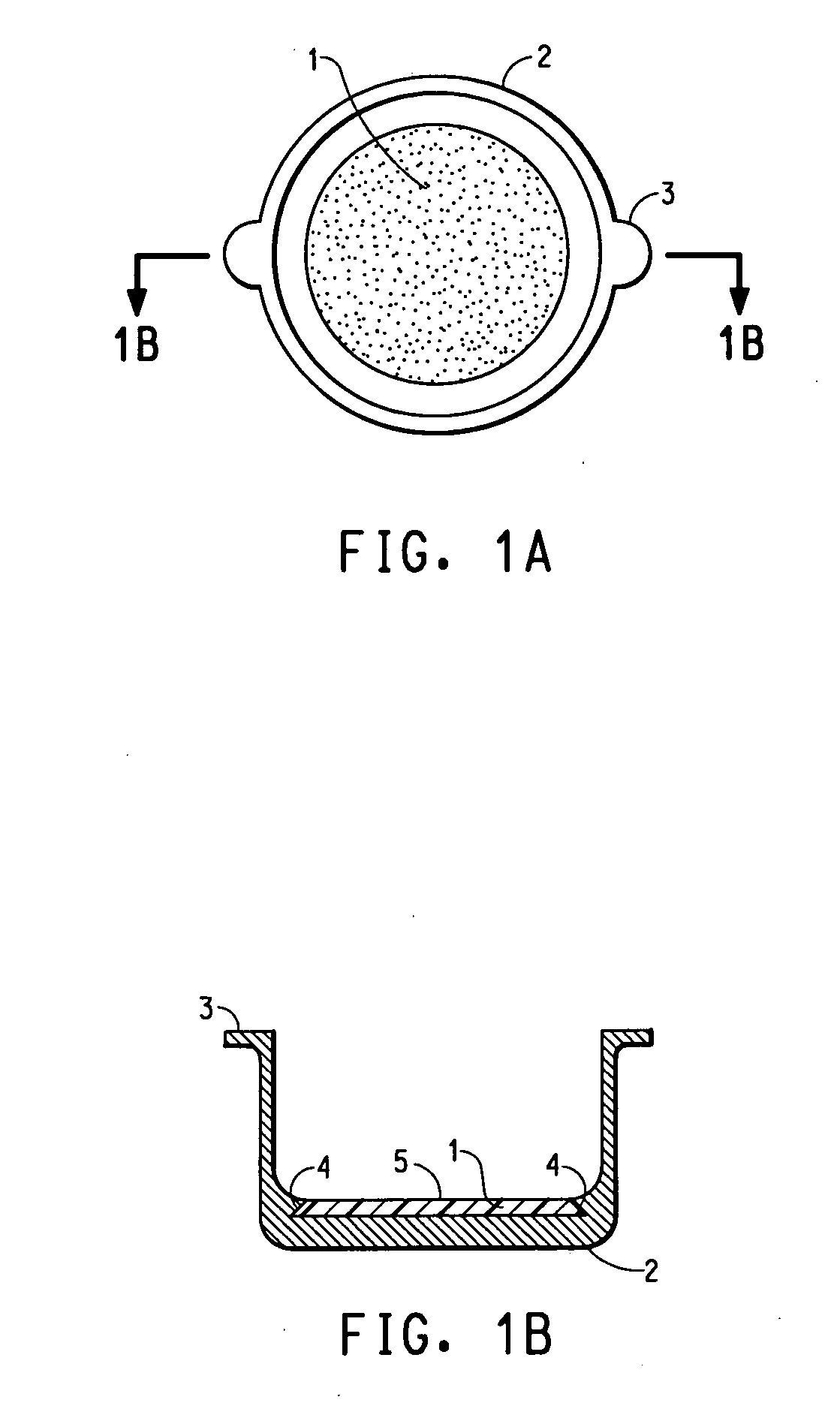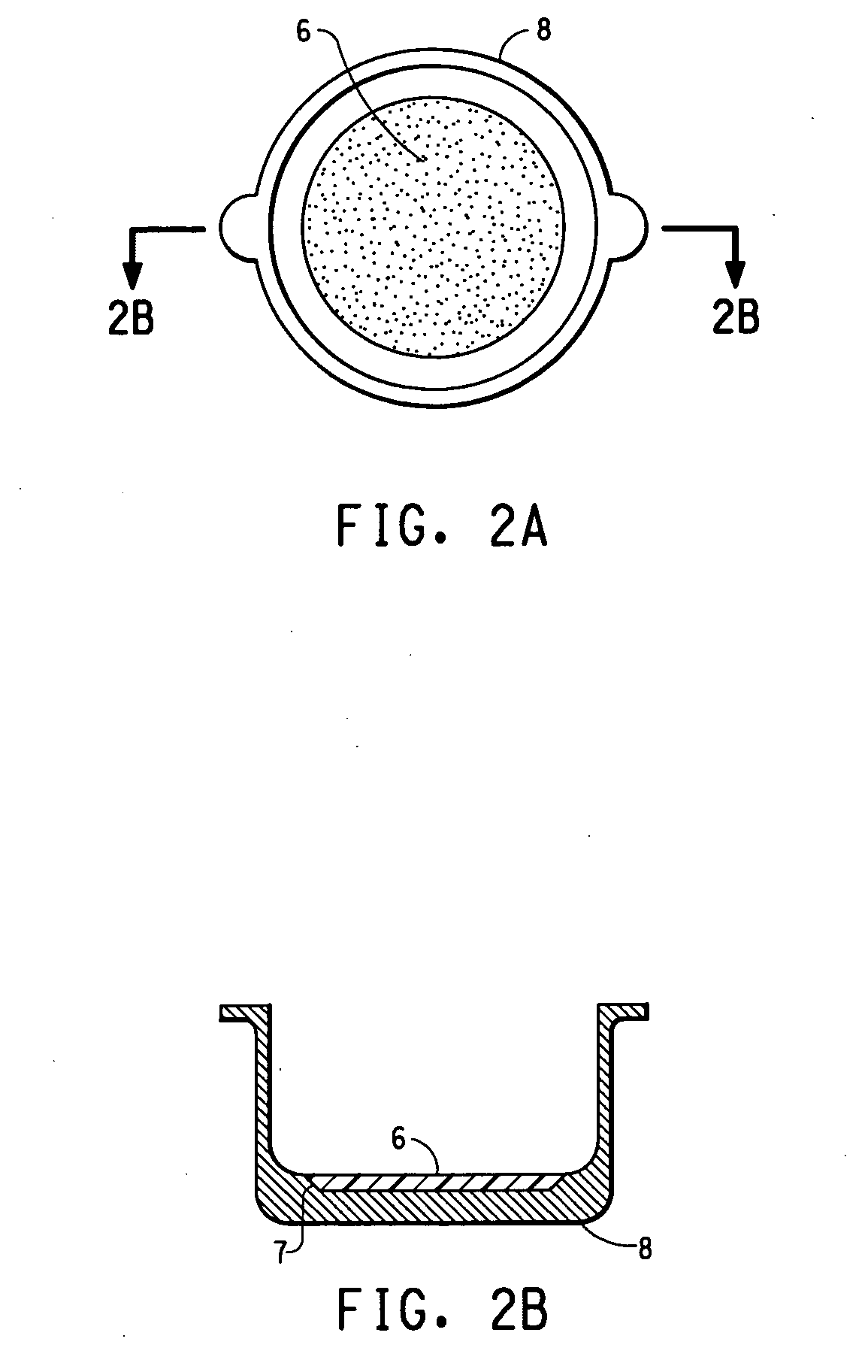Ovenware for microwave oven
a microwave oven and oven plate technology, applied in the field of oven plate for microwave oven, can solve the problems of relatively low weight, relatively easy to break, and generally inability to use metal containers in such ovens
- Summary
- Abstract
- Description
- Claims
- Application Information
AI Technical Summary
Benefits of technology
Problems solved by technology
Method used
Image
Examples
example 1
[0081] A melt blend of 50 weight percent LCP A and 50 weight percent Ferrite 1 was made by melt mixing in a 30 mm Werner & Pfleiderer (Stuttgart, Germany) twin screw extruder. The LCP was fed at the back and Ferrite 1 was side fed. There were 9 barrels, and barrel 2 was 148° C., barrel 3 was 304° C., and the rest of the barrels were 345-357° C. The screw was operated at 250 rpm, which gave a production rate of about 13.6 kg / h. The resulting blend was extruded into strands and cut into pellets. These pellets were then injection molded, in an HPM 6 oz. single screw injection molding machine with barrel temperatures set to 370° C., into circular 10.2 cm dia.×0.32 cm thick discs.
[0082] A disc was placed into a Panasonic® Model NN-6470A microwave oven (this oven was made for the consumer cooking market) equipped with a turntable and which had a power input of 1.54 kW. Also placed into the oven was a beaker containing 400 ml of water to absorb “excess” microwave radiation if the ferrite ...
example 2
[0084] The thermoplastic composition used was the 10.2 cm diameter discs described in Example 1. The microwave oven used was also as described in Example 1, but without the 400 ml of water present.
[0085] The first food to be tested were “Bagel Bites” with a cheese, sausage and pepperoni topping. These were partially cooked bagel halves (cut perpendicular to the bagel hole's axis) topped on the flat side with the meats, cheese and tomato sauce. After some experimentation with varying times and power levels, after cooking for 7 min. at low power the topping was nicely heated and melted, and the bottom of the bagel was nicely browned where it had contacted (or was in near contact) the disc. At the end of the cooking the disc temperature was measured as 116° C.
[0086] The next food to be tested was a “Celeste®”s a Pizza for One”, topped with cheese, tomato sauce and pepperoni. The pizza was cut into 8 wedges, and the wedges were individually tested. Again after some experimentation var...
example 3
[0087] A melt blend of 1157 g percent LCP A, and 679 g Ferrite 1, and 727 g of BN was made by melt mixing in a 30 mm Werner & Pfleiderer (Stuttgart, Germany) twin screw extruder. The materials were powder blended and fed at the back of the extruder. There were 9 barrels, and barrel 2 was about 223° C., barrel 3 was about 302° C., and the rest of the barrels were 344-358° C. The screw was operated at 300 rpm, which gave a production rate of about 13.6 kg / h. The resulting blend was extruded into chunks and the chunks chopped into “pellets”. These pellets were then injection molded, in an HPM 6 oz. single screw injection molding machine with barrel temperatures set to 370° C., into circular 10.2 cm dia.×0.32 cm thick discs.
[0088] Using the microwave oven of Example 1 a disc was placed into the oven. Also placed into the oven was a beaker containing 400 ml of water to absorb “excess” microwave radiation if the ferrite was above the Curie temperature (this water was changed as needed to...
PUM
 Login to View More
Login to View More Abstract
Description
Claims
Application Information
 Login to View More
Login to View More - R&D
- Intellectual Property
- Life Sciences
- Materials
- Tech Scout
- Unparalleled Data Quality
- Higher Quality Content
- 60% Fewer Hallucinations
Browse by: Latest US Patents, China's latest patents, Technical Efficacy Thesaurus, Application Domain, Technology Topic, Popular Technical Reports.
© 2025 PatSnap. All rights reserved.Legal|Privacy policy|Modern Slavery Act Transparency Statement|Sitemap|About US| Contact US: help@patsnap.com



